EDIT:
There is a problem while deserializing: the member "field1" will not be properly deserialized.
1) Serialized person:
var person = new Employee()
{
Name = "Mark Zuckerberg",
Salary = 1000
};
var bf = new BinaryFormatter();
bf.Serialize(new FileStream("C:\\TEMP\\test.dat", FileMode.Create), person);
[Serializable]
public class Employee
{
public string Name { get; set; }
public decimal Salary { get; set; }
}
2) Changed class structure
[Serializable]
public abstract class Person
{
public string Name { get; set; }
}
[Serializable]
public class Employee : Person
{
public decimal Salary { get; set; }
}
3) Deserialized: Name is null

Original Answer:
Assuming you are using the BinaryFormatter, this article does not mention anything about it, so I guess it's fine (EDIT: It's NOT fine).
Here are some best practices to follow generally (also extracted from above article):
- Never remove a serialized field.
- Never apply the NonSerializedAttribute attribute to a field if the
attribute was not applied to the field in the previous version.
- Never change the name or the type of a serialized field.
- When adding a new serialized field, apply the OptionalFieldAttribute
attribute.
- When removing a NonSerializedAttribute attribute from a field (that
was not serializable in a previous version), apply the
OptionalFieldAttribute attribute.
- For all optional fields, set meaningful defaults using the
serialization callbacks unless 0 or null as defaults are acceptable.
To ensure that a type will be compatible with future serialization engines, follow these guidelines:
- Always set the VersionAdded property on the OptionalFieldAttribute
attribute correctly.
- Avoid branched versioning.
